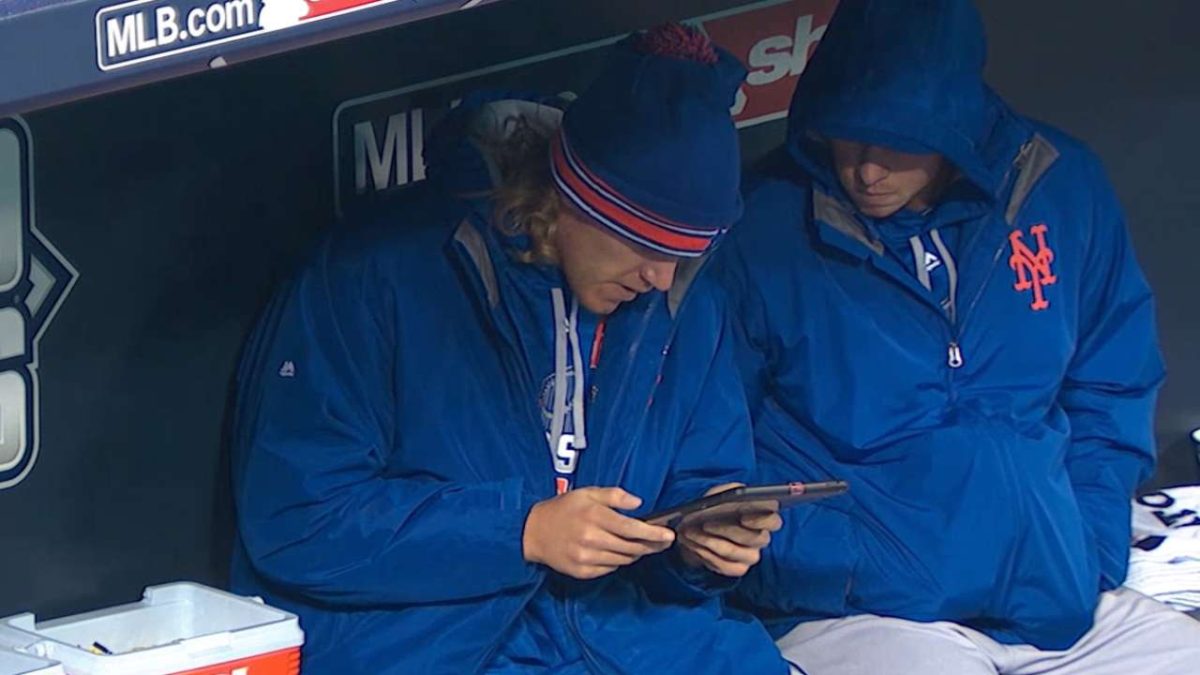Maybe New England Patriots head coach Bill Belichick was on to something when he railed against the NFL bringing tablets to the sidelines a couple of years ago, although it’s clear Patriots fans like having unprecedented access to their technology. Nevertheless, a scandal involving old-school baseball using new-fangled technology makes me wonder whether MLB should walk away from its technology partners as soon as possible, too.
The Boston Red Sox this week admitted to using Apple watches to steal signs from their arch-rivals, the New York Yankees, in the latest example of how technology can be troublesome when mixed with a game so rooted in tradition and old-school mentality (maybe that’s why I love it so much).
[related]
Although MLB officials introduced iPad Pros into all team dugouts and bullpens before last season, the devices themselves are not connected to any WiFi network and the league maintains a ban on the use of electronic devices during games.
Two years ago, former Red Sox third baseman Pablo Sandoval—who was released this season in the middle of a five-year, $95 million albatross of a contract—was busted “liking” Instagram photos, apparently while taking care of some business during a game. He was suspended and publicly shamed for the violation.
MLB tried in 2013 to bring technology into dugouts and bullpens through a since-scuttled partnership with T-Mobile that would’ve replaced dugout and bullpen phones with cell phones. I’m still not sure what ever happened with that whole thing, but I’m sure hackers could’ve figured out some way to have a John Farrell imitator call the bullpen to warm up the worst Sox reliever in the late innings of a close game if it ever went through.
Farrell, you see, knew his players were stealing signs from their rivals, since that’s been going on since the first baseball game in history, but claims he had no idea the sign-stealing involved any sort of technology, particularly the video review team sending messages to a Sox trainer, who passed info on to baserunners to try to score.
And please don’t get me started about the abomination that is baseball’s instant replay system. When managers challenge calls, two umpires put on headphones connected to a bag phone that calls MLB headquarters in New York. They wait silently for someone to tell them whether they got the call right and signal what they’re told, without any explanation to fans or real concern about sticking to the two-minute limit or edict to improve the game’s pace of play.
As you can see, unless we’re talking about giant center field video boards, ribbon boards and digital menu boards installed throughout all of MLB by some of our favorite integrators, baseball and technology — from iPads and Apple watches to T-Mobile phones — seem to be a concoction fraught with disaster.
Last week, Ticketmaster kept thousands of Sox and Yankees fans from enjoying the rivalry from the comfort of their seats inside the stadium when its mobile app crashed. That’s especially poor form when Ticketmaster has gone mobile-only for its tickets.
And here’s hoping those integrators who install digital menu boards don’t also add touchscreen kiosks for fans inside stadiums to “speed up” how quickly fans can get their food and get back to their seats. Trust me: that’s not always as easy as you might think.
I’m not advocating going back to the days when baseball stadiums only had manual scoreboards and players left their gloves on the field between innings so the other team could share them, but a little less technology at the ballpark could probably eliminate a whole lot of problems. Let’s go back to a time when players stole signals the old-fashioned way: without Apple watches.
[promo_content slug=”quiz-which-nfl-quarterback-are-you”]










